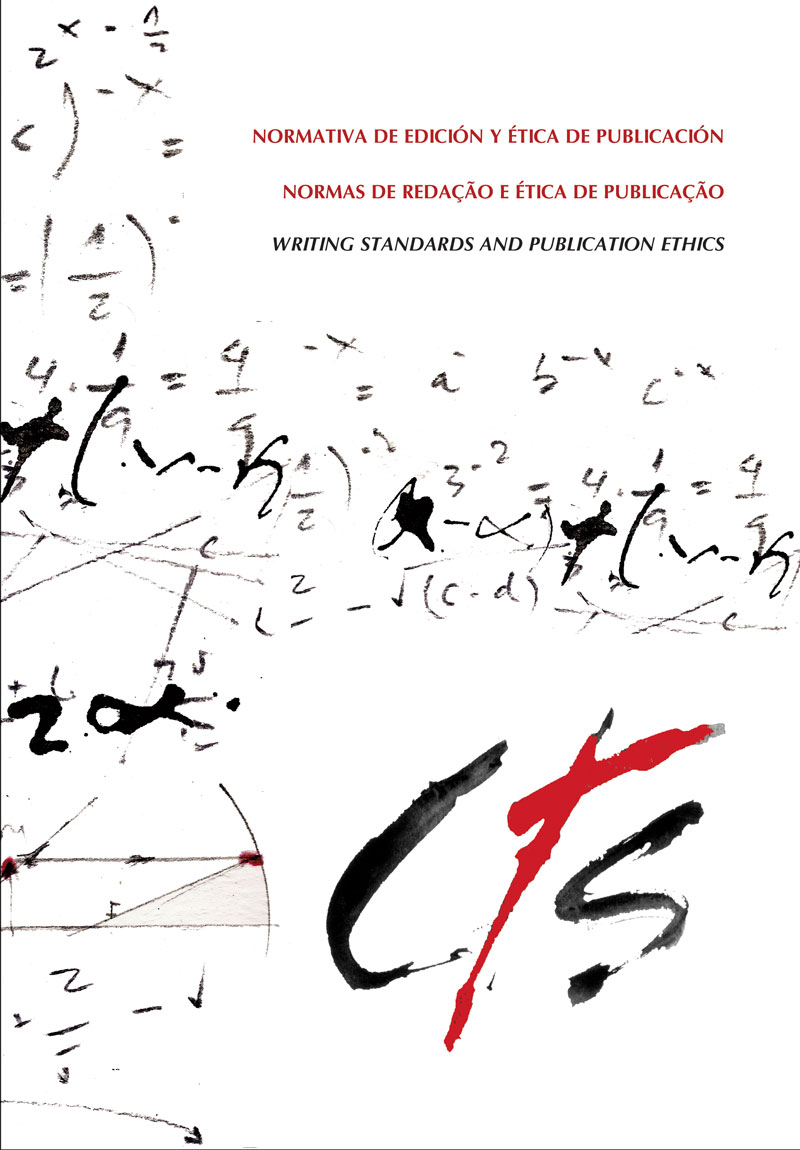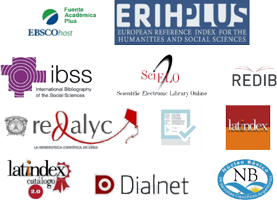¿Es factible una ciencia precaucionaria?
Un análisis de la influencia de la precaución en la generación de conocimiento regulador
DOI:
https://doi.org/10.52712/issn.1850-0013-425Palabras clave:
ciencia precaucionaria, principio de precaución, regulación de la ciencia y la tecnología, ciencia reguladora, evaluación de riesgos, evaluación de beneficiosResumen
Tradicionalmente se ha hablado en la regulación de la ciencia y la tecnología del “principio de precaución”, que se opone a una regulación basada únicamente en una evaluación de riesgos. En este artículo se argumenta que, actualmente, debido al estado de desarrollo que ha alcanzado la regulación de productos y procesos científico-tecnológicos, podría tener sentido diferenciar, por un lado, el principio de precaución y, por otro, una ciencia precaucionaria. Esta última se caracterizaría por procesos reguladores cuyo objetivo es gestionar la incertidumbre mediante, por ejemplo, la inversión de la carga de la prueba o la vigilancia poscomercialización. El primero, en cambio, estaría enfocado en una minimización de la incertidumbre mediante la renuncia a generar información sobre determinados procesos y productos científico-tecnológicos considerados potencialmente dañinos, procediendo directamente a su sustitución por otros que se consideran más benignos. Mientras que el principio de precaución persigue reorientar el desarrollo tecnológico, la ciencia precaucionaria busca generar conocimiento sobre posibles consecuencias de los productos y gestionar la aplicación de tales productos de forma controlada.
Descargas
Citas
Blaauboer, B., Boobis, A., Bradford, B., Cockburn, A., Constable, A., Daneshian, M., Edwards, G., Garthoff, J., Jeffery, B., Krul, C. & Schuermans, J. (2016). Considering new methodologies in strategies for safety assessment of foods and food ingredients. Food and Chemical Toxicology, 91, 19-35.
De Sadeleer, N. (2007). Implementing the Precautionary Principle. Approaches from the Nordic Countries, EU and USA. Londres: Earthscan.
European Commission (2000). Communication from the Commission on the precautionary principle, COM 1 (2000). Bruselas: CE.
European Parliament and Council (2001). Directive 2001/18/EC (12/3/2001) on the deliberate release into the environment of genetically modified organisms. Official Journal of the European Communities, L106, 17/4/2001.
European Parliament and Council (2003). Regulation 1830/2003 on the traceability and labelling of genetically modified organisms (GMOs) and the traceability of food and feed products produced from GMOs. Official Journal of the European Communities, L268, 18/10/2003.
Funtowicz, S. & Ravetz, J. (1993). Science for the Post-Normal Age. Futures, 25, 739-755.
Gibbons, M., Limoges, C., Nowotny, H., Schwartzman, S., Scott, P. & Trow, M. (1994). The New Production of Knowledge: The Dynamics of Science and Research in Contemporary Society. Londres: Sage.
Hansson, S. (1997). Can we reverse the burden of proof? Toxicology Letters, 90, 223-228.
Hansson, S. (2020). How Extreme Is the Precautionary Principle? Nanoethics, 14, 245-257.
Hansson, S., Carlsen, L. & Tickner, J. (2007). Chemicals regulation and precaution: does REACH really incorporate the precautionary principle. Environmental Science & Policy, 10, 395-404.
Jiménez-Buedo, M. & Ramos Vielba, I. (2009). ¿Más allá de la ciencia académica? Modo 2, ciencia posacadémica y ciencia posnormal. Arbor, 185, 721-737.
Krewski, D., Andersen, M., Tyshenko, M., Krishnan, K., Hartung, T., Boekelheide, K., Wambaugh, J., Jones, D., Whelan, M., Thomas, R., Yauk, C., Barton‐Maclaren, T. & Cote, I. (2020). Toxicity testing in the 21st century: progress in the past decade and future perspectives. Archives of Toxicology, 94, 1–58.
Luján J. L. & Todt O. (2012). Precaution: A taxonomy. Social Studies of Science, 42, 143-157.
Luján, J. L. & Todt, O. (2018). The dilemmas of science for policy. EMBO Reports, 19, 194-196.
Luján, J. L. & Todt, O. (2021). Evidence Based Methodology: A Naturalistic Analysis of Epistemic Policies in Regulatory Science. European Journal for Philosophy of Science, 11, 1-19.
Michaels, D. (2008). Doubt is our product. Oxford: Oxford University Press.
Michaels, D. & Monforton, C. (2005). Manufacturing Uncertainty. American Journal of Public Health, 95(S1), 39-49.
National Research Council (2007). Toxicity Testing in the 21st Century: A Vision and a Strategy. Washington DC: National Acadamies Press.
Nowotny, H., Scott, P. & Gibbons, M. (2001). Re-Thinking Science. Knowledge and the Public in an Age of Uncertainty. Cambridge: Polity Press.
Raffensperger, C. & Tickner, J. (1999). Protecting Public Health and the Environment: Implementing the Precautionary Principle. Washington DC: Island Press.
Rechnitzer, T. (2022). Applying Reflective Equilibrium. Towards the Justification of a Precautionary Principle. Springer: Cham.
Rudén, C. & Hansson, S. (2010). Registration, Evaluation, and Authorization of Chemicals (REACH) is but a first step – How far will it take us? Six further steps to improve the European chemicals legislation. Environmental Health Perspectives, 118, 6–10.
Sunstein, C. (2002). Risk and Reason: Safety, Law and the Environment. Cambridge: Cambridge University Press.
Sunstein, C. (2005). Laws of fear: beyond the precautionary principle. Cambridge: Cambridge University Press.
Tickner, J. (Ed.) (2003). Precaution, Environmental Science, and Preventive Public Policy. Washington, DC: Island Press.
Todt, O. & Luján, J. L. (2014). Analyzing precautionary regulation: do precaution, science and innovation go together? Risk Analysis, 34, 2163-2173.
Todt, O. & Luján, J. L. (2017). Non-Cognitive Values and Methodological Learning in the Decision-Oriented Sciences. Foundations of Science, 22, 215-234.
Todt, O. & Luján, J. L. (2022). Rationality in Context: Regulatory Science and the Best Scientific Method. Science, Technology & Human Values, 47, 1086-1108.
Weinberg, A. (1972). Science and Trans-Science. Minerva, 10, 209-222.
Westmoreland, C., Bender, H., Doe, J., Jacobs, M., Kass, G., Madia, F., Mahony, C., Manou, I., Maxwell, G., Prieto, P., Roggeband, R., Sobanski, T., Schütte, K., Worth, A., Zvonar, Z. & Cronin, M. (2022). Use of New Approach Methodologies (NAMs) in regulatory decisions for chemical safety: Report from an EPAA Deep Dive Workshop. Regulatory Toxicology and Pharmacology, 135, 105261.
Wiener, J., Rogers, M., Hammitt, J. & Sand, P. (2011). The Reality of Precaution. Londres: Earthscan.
Descargas
Publicado
Cómo citar
Número
Sección
Licencia
Derechos de autor 2024 CC Attribution 4.0

Esta obra está bajo una licencia internacional Creative Commons Atribución 4.0.
Todos los números de CTS y sus artículos individuales están bajo una licencia CC-BY.
Desde 2007, CTS proporciona un acceso libre, abierto y gratuito a todos sus contenidos, incluidos el archivo completo de su edición cuatrimestral y los diferentes productos presentados en su plataforma electrónica. Esta decisión se sustenta en la creencia de que ofrecer un acceso libre a los materiales publicados ayuda a un mayor y mejor intercambio del conocimiento.
A su vez, para el caso de su edición cuatrimestral, la revista permite a los repositorios institucionales y temáticos, así como también a las web personales, el auto-archivo de los artículos en su versión post-print o versión editorial, inmediatamente después de la publicación de la versión definitiva de cada número y bajo la condición de que se incorpore al auto-archivo un enlace a la fuente original.











